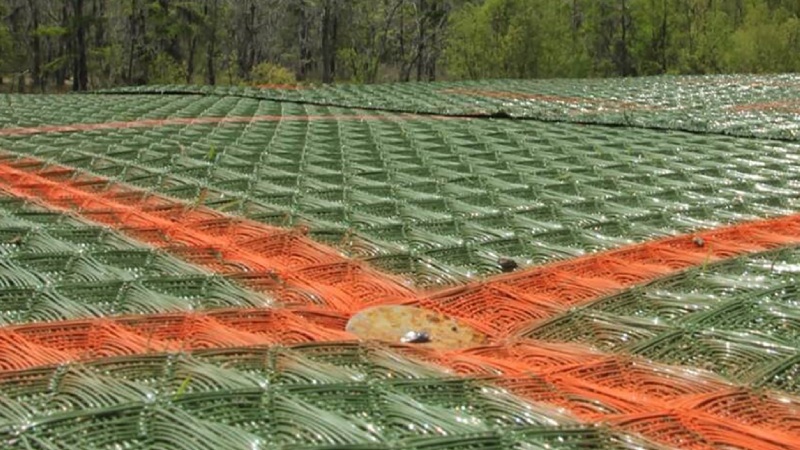Why choosing the right geosynthetic isn’t as simple as it seems
When faced with how to rehabilitate an embankment to protect against erosion, there are typically two options that our customers ask for: a permanent geosynthetic solution or a biodegradable product.
However, a common misconception with permanent solutions is that they must use a synthetic or polymer type product to be deemed ‘permanent’. In fact, biodegradable products such as coir and jute can also be a permanent solution, as they provide the necessary environment for vegetation to grow, and it is this plant growth rather than the geotextile itself that provides the permanent long-term solution.
Therefore the ultimate goal of any stabilisation project should be to encourage strong vegetative growth, providing a natural stabilising force via enmeshed plant roots.
In this article, we take a look at the two most common approaches to rehabilitating an embankment and how to determine which is right for your project.
Long term embankment rehabilitation
Rehabilitating a batter, hill or embankment typically involves the application of a geosynthetic material to prevent erosion and aid the development of grass or plants. Whilst this is often part of a planned project, emergency rehabilitation works can also arise especially after heavy rain and storms.
In the case of emergency embankment rehabilitation, this is where a temporary solution is often used. The contractor or maintenance crew will generally use a geosynthetic such as a non-woven geotextile to cover the area, laying it relatively loosely until a more robust solution is properly designed by an engineer.
This temporary erosion solution then gives way to a permanent solution, which can utilise either polymer-based geotextiles such as turf reinforcement mats, or biodegradable products such as jute matting.
Which should I choose for my project?
Whilst every project is unique, there are a few common questions you can ask yourself to determine which is the best rehabilitation solution. These include:
- What level of tensile strength is required to stabilise the embankment?
- Is the area likely to be subject to fast-flowing water?
- What is the desired aesthetic look of the finished project?
- How will the area be maintained?
Maintenance is a critical issue for grassed areas, which can become an unsightly mess if a permanent turf reinforcement mat (TRM) is specified for a steep or hard to access embankment. Steep grades that cannot be mown can also cause visibility issues if located alongside roadways.
In hard to maintain areas, planting out native plants is often a better solution, in which case a biodegradable product such as jute or coir matting may be a good choice. Coir matting comes loosely woven with gaps to plant seedlings, and jute matting can easily be slit to insert tube stock for mass planting.
For this kind of finished effect, a TRM is not a good choice, as slitting it to plant seedlings severely impacts its tensile strength. If you have decided on a high-performance synthetic turf mat with excellent strength characteristics, the last thing you want to do is render it ineffective by cutting into it.
This is why a TRM is a preferred choice for grassed areas rather than areas landscaped with native plants. By anchoring the TRM to the embankment and applying grass seeds, the unique 3D weave of the mat allows grass to grow through and over it, providing a long-term vegetated armour layer.
In the case of embankments that include a channel, drain or creek, the velocity of fast-flowing water needs to be taken into account when choosing a permanent solution. When in flood, even small waterways can experience flows of up to 8L of water per second, applying forces that will quickly destroy a product such as jute matting.
Coir is more resistant to water but doesn’t have the tensile strength for strong water flows, so a TRM would usually be a better solution for river banks and areas with the potential for fast-flowing water or seasonal flooding.
With any project, it’s important to get a proper environmental assessment from an engineer to determine which product will give a reliable long term result.
Help and advice on choosing a geosynthetic for embankment rehabilitation
Polyfabrics are a leading innovator in geosynthetic solutions for the civil engineering, landscaping and construction industries.
We supply a wide range of permanent and temporary geosynthetic solutions including TRMs, jute matting, coir mesh and much more – all with fast delivery, Australia wide!
For advice on the best embankment rehabilitation product for your project, get in touch with our expert engineering team on 1300 287 484.

